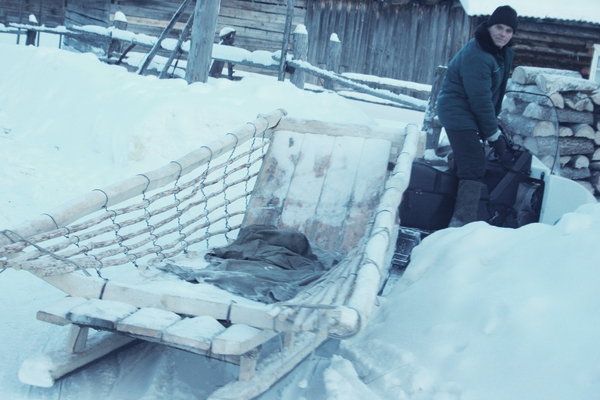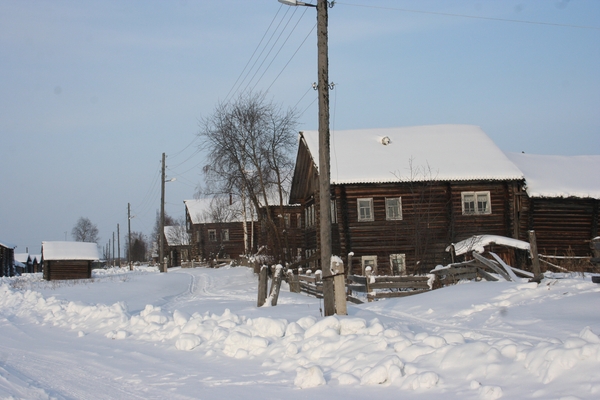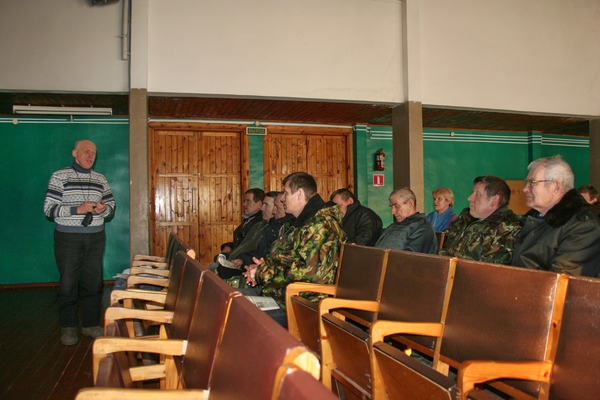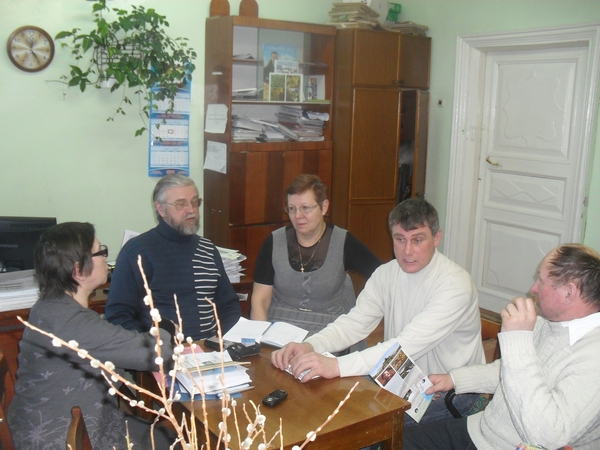River resource management is hindered by the lack of cooperation
Activities within the project “Fish resource management in cooperation with local population: Model River Mezen” are gradually spreading to the districts of the nearby Arkhangelsk region. At the end of February, representatives of the Project Working Group Albert Loginov, Udorsky municipal district Council deputy, and Silver Taiga Foundation Local Communities Project Manager Valentina Semyashkina visited Leshukonsky and Mezensky districts.
It is known that the Mezen flows through three administrative districts – Udorsky, Leshukonsky, and Mezensky, which belong to two constituent units of the Russian Federation – the Komi Republic and Arkhangelsk region.
During the meetings, expeditions, and discussions held in 2011, the Project Working Group and its participants made sure that, unfortunately, the unenviable situation with the fish resources of the Mezen is mostly the result of the lack of cooperation in their management. Lack of both territorial and institutional cooperation. It seems that it is clear for everybody that, e.g., the efforts made in order to protect spawning grounds in the upper reaches of the river will not give any result if salmon is ruthlessly fished by poachers on its whole migration path and fished in industrial scales in the sea. However, this is the reality.
There are practically no contacts between municipal districts located along the Mezen. There is also no cooperation even between the parts of one and the same agency – “Komirybvod” and “Sevrybvod”; interdistrict department of state control, inspection, and conservation of water bioresources in Mezensky district and similar department in Udorsky district. This “tradition” should be changed if we truly want to change the situation with fish resources.
erefore, one of the basic principles taken into account by the project “Model River Mezen” participants is the holistic approach to the evaluation of the situation, cause-and-effect relations, and planning of activities.
The districts are different, but there is only one river. There can be only conditional division of the river into administrative units, and it is totally impossible to divide the Mezen River ecosystem and fish population: nature does not accept administrative borders.
Therefore, a very important condition for the project efficiency is contact establishment with Arkhanglesk region districts, cooperative search of ways out for problem solving, and coordinated actions.
 Of course, during one trip, it was not possible to visit all the villages located along the Mezen River in the neighboring region: there are around one hundred settlements in Mezensky and Leshukonsky districts. However, it was possible to meet many inhabitants of these two districts, heads of village administrations, activists of territorial public self-governance, and district management and discuss the burning fish-related issue with them. There were two main objectives for all these meetings: firstly, to inform the neighbors about the aims and tasks of the project “Model River Mezen”; secondly, to hear their opinion and attitude towards the problem.
Of course, during one trip, it was not possible to visit all the villages located along the Mezen River in the neighboring region: there are around one hundred settlements in Mezensky and Leshukonsky districts. However, it was possible to meet many inhabitants of these two districts, heads of village administrations, activists of territorial public self-governance, and district management and discuss the burning fish-related issue with them. There were two main objectives for all these meetings: firstly, to inform the neighbors about the aims and tasks of the project “Model River Mezen”; secondly, to hear their opinion and attitude towards the problem.
Everywhere where the discussions took place, people, worried about the condition of fish resources, understood and supported project initiatives. However, there was no well-defined opinion and unified stance with respect to the reasons of the existing situation. E.g., at the meeting with the inhabitants of Vozhgora (Leshukonsky district), the participants, not without any reason, announced unanimously that fish resources should be recovered starting from the river mouth where industrial fishing takes place. But, at the same time, they did not conceal their “contribution” to salmon illegal fishing on its path to spawning grounds. Speaking about Mezensky district, there, many people did not see the connection between industrial fishing and salmon population in the Mezen. In Leshukonsky district, the pontoon bridge installed across the Mezen River near the village of Kizhma last summer was mentioned several times. Leshukonsky district inhabitants, as well as Udorsky district residents, thought that the bridge was an obstacle for the fish on the path to the spawning grounds. Speaking about Mezensky district inhabitants, they held a different opinion: the bridge is not a problem; salmon did not get into spawning grounds because the water in the river was too warm due to the hot last summer…
However, taking into consideration several questions, the neighboring region population had practically the same opinion as local residents of Udorsky district. E.g., they complained that Russian regulations do not take into consideration traditional rights, that traditional nature use is legal only for small-numbered peoples, and it means that others breach the law being involved in traditional industries. “We are not considered to be coast-dwellers though we have been struggling for it for a long time,” – Mezensky district residents said.
Meetings in the districts of the neighboring region are the first step to cooperation in the search of ways for the recovery of fish resources important for the population, including Mezen salmon population. What to do next? What depends on state organizations responsible for fish resources and what is the domain of local residents? What can be done now within the frames of the project? The discussion of this and other issues should have been started a long time ago; therefore, the initiatives of the project which is now being implemented in the Komi Republic are interesting for the inhabitants of the neighboring region as well. More active involvement in the implementation of the planned actions already this year is one of the tasks of the Project Working Group.




